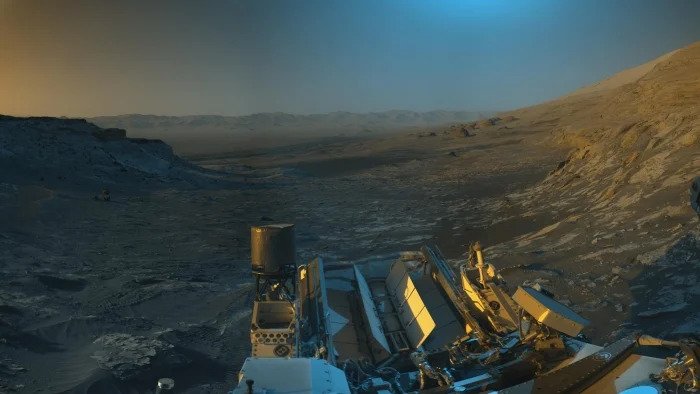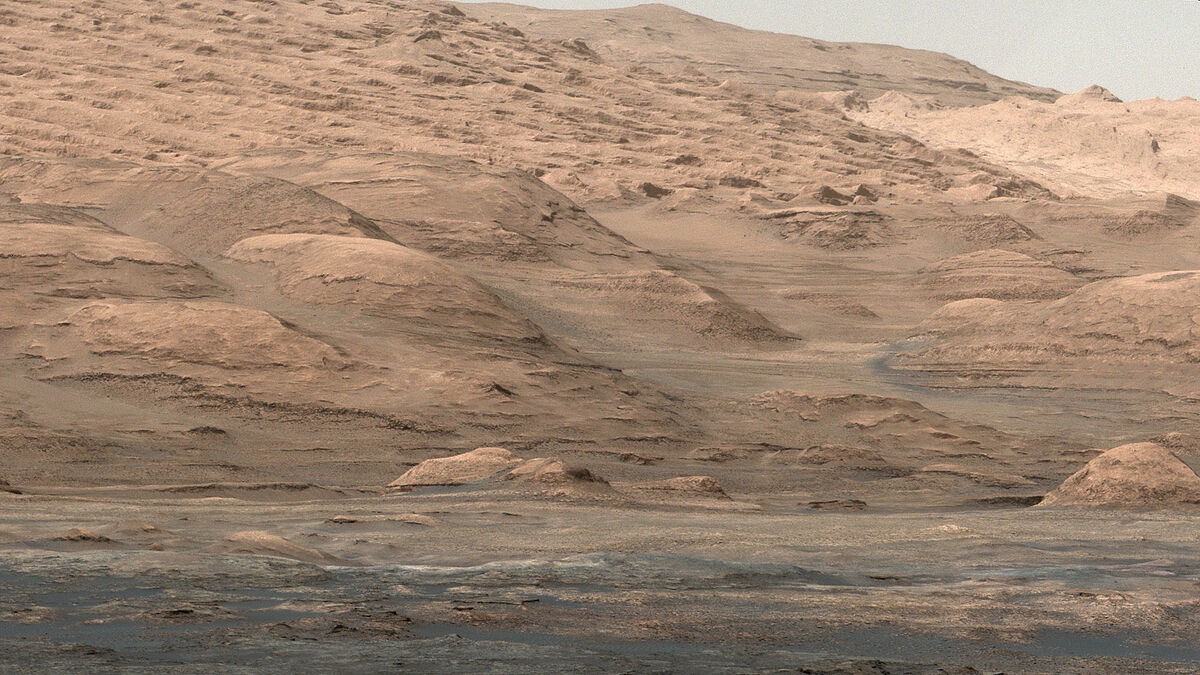Life on Mars is always fantasized by humans but nothing solid is known on how it will look once the colonization begins. However, by virtue of NASA’s Curiosity rover and enhancement done by the Curiosity mission team on the photographs taken, it is exhibited how life on Mars might look.
“NASA’s Curiosity rover captured a remarkable image from its most recent perch on the side of Mars’ Mount Sharp,” a blog post on NASA’s Jet Propulsion Laboratory (JPL) website reads.
“The mission team was so inspired by the beauty of the landscape, they combined two versions of the black-and-white images from different times of the day and added colors to create a rare postcard from the red planet.”

The images were captured by the rover on November 16 when it completed its most recent drive. Usually, at these points, Curiosity captures a low-resolution 360-degree panorama of its surroundings, on the slopes of Mount Sharp in the Gale Crater. This time the scientists worked to make the resolution higher.
At 8.30 pm and 4.10 pm Mars-time, two separate images of the scene were captured and sent back to earth. The Curiosity team worked on the pictures to make them more illustrative.
The blue color represents the morning light, the orange represents the afternoon, and when both times are combined, the green color appears.
The image shows Mount Sharp that is the 5.5-kilometer (3.4-mile) peak at the center of the Gale Crater. Besides this, a field of rippled sands called the Sands of Forvie is also visible in the photographs.

At the extreme right, Rafael Navarro Mountain is found that was named to honor the Curiosity mission scientists played a role in finding organic compounds on Mars. Rafael passed away this year.
NASA has two rovers on Mars and Curiosity is one of them. It has been there since 2012.
The whole process was done to gauge the geology and geography of the planet.
Perseverance is the other rover, and it will be looking at Mars’ habitability closely. It is finding signs of life like microscopic fossils that may be present in the rocks of Mars.
Curiosity was meant to be there for two years, but it has come very far and is still expected to go ahead. It is expected that both innovations will operate to add to each other’s work and give a holistic approach to life on Mars.


